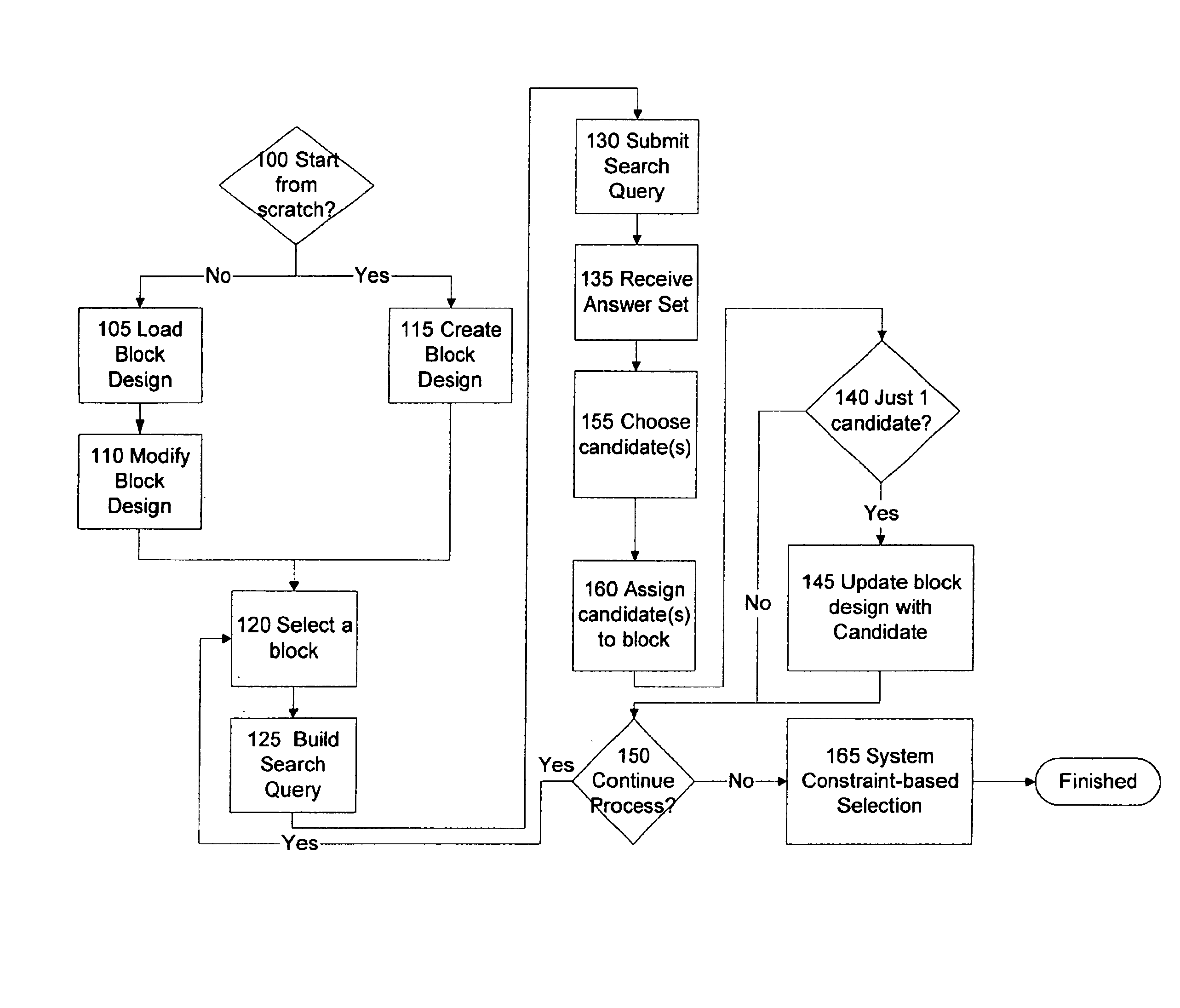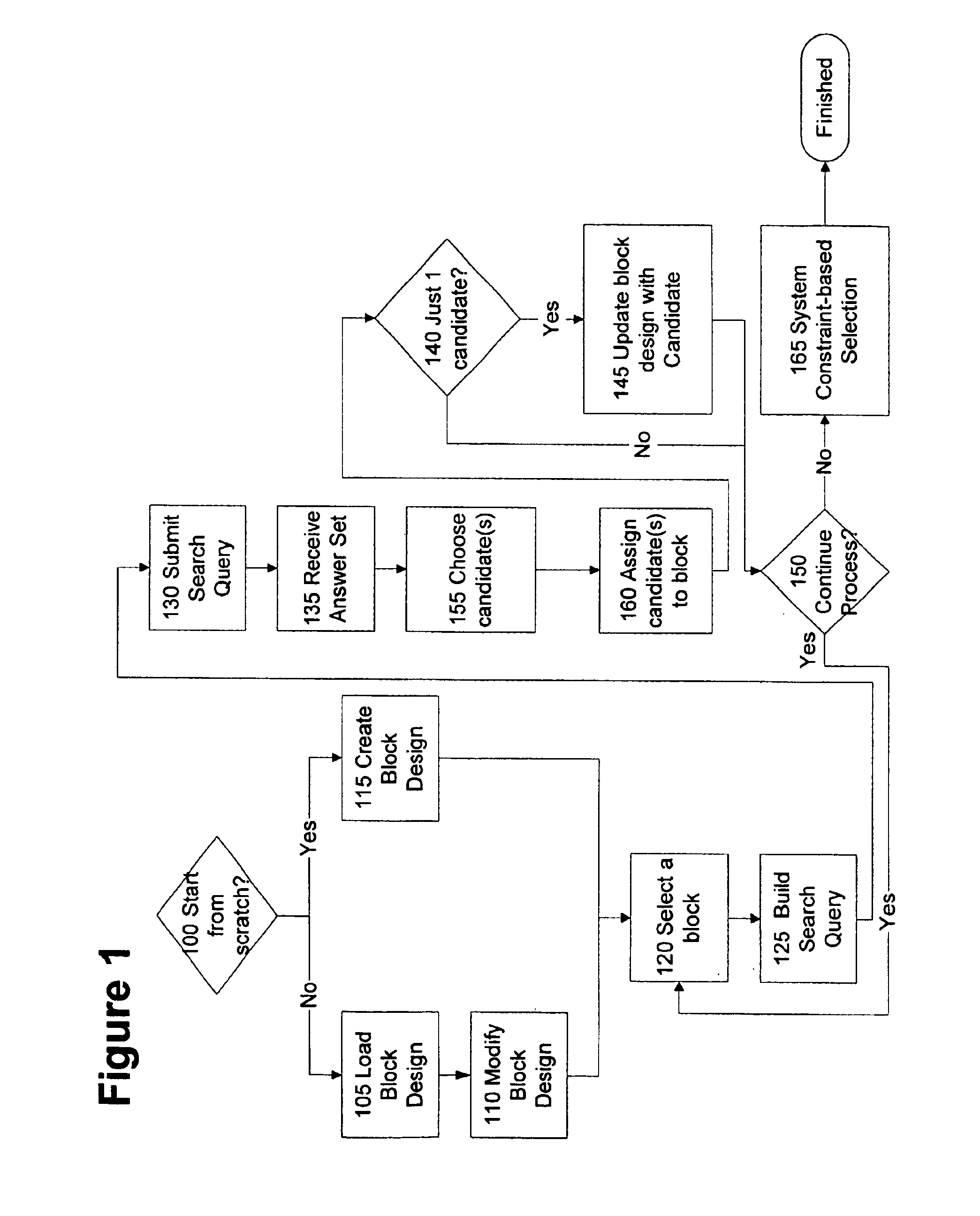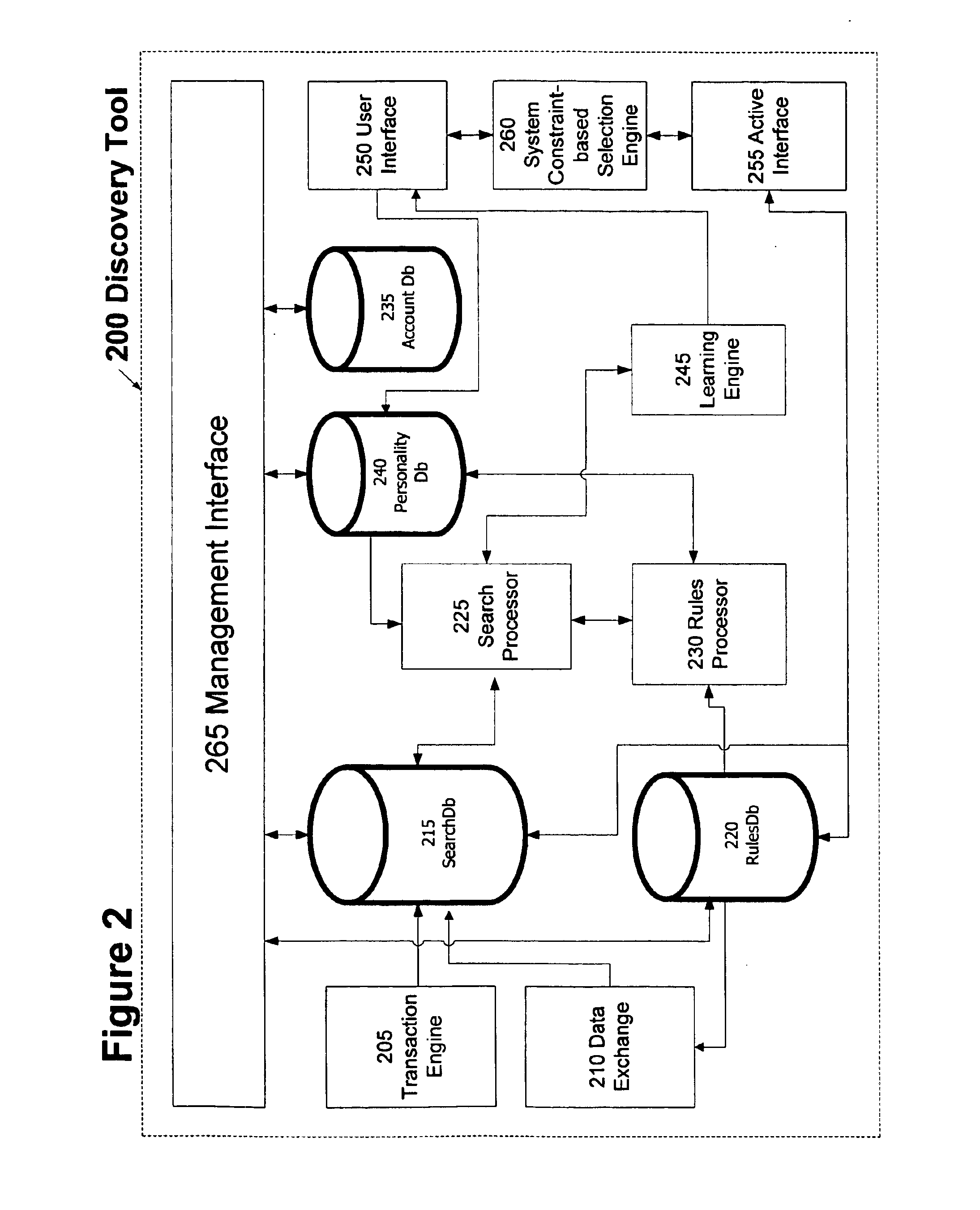Method for system-constraint-based selection for design components
a design component and constraint-based technology, applied in the field of computer-aided design, can solve the problems of short life cycle, non-competitive or unprofitable products, and high-tech research and development processes, and achieve the effects of accelerating the development and delivery of increasingly complex products, and avoiding the use of ad-hoc analysis
- Summary
- Abstract
- Description
- Claims
- Application Information
AI Technical Summary
Problems solved by technology
Method used
Image
Examples
Embodiment Construction
[0043]The present invention is a method and a computerized discovery design tool for engineers. Throughout the drawings, an attempt has been made to label corresponding elements with the same reference numbers. The reference numbers include:
[0044]
Reference NumberDescription100 through 165Steps in FIG. 1's Flowchart200Discovery tool205Transaction Engine210Data exchange215Search Database220Rules Database225Search Processor230Rules Processor235Account Database240Personality Database245Learning Engine250User Interface255Active Interface260System-Constraint-based Selection Engine265Management Interface305CPU310Memory315Clock320Candidates for CPU Component325Candidates for Memory Component330Candidates for Clock Component405 through 450Steps in FIG. 4's flowchart605610Proxy Server615Server620Cluster Server625Objects & Processors630Ad Server635Index Server640Site Server Commerce Edition645Databases650File Server705 through 740Steps in FIG. 7's flowchart
[0045]With respect to Discovery under...
PUM
 Login to View More
Login to View More Abstract
Description
Claims
Application Information
 Login to View More
Login to View More - R&D
- Intellectual Property
- Life Sciences
- Materials
- Tech Scout
- Unparalleled Data Quality
- Higher Quality Content
- 60% Fewer Hallucinations
Browse by: Latest US Patents, China's latest patents, Technical Efficacy Thesaurus, Application Domain, Technology Topic, Popular Technical Reports.
© 2025 PatSnap. All rights reserved.Legal|Privacy policy|Modern Slavery Act Transparency Statement|Sitemap|About US| Contact US: help@patsnap.com



